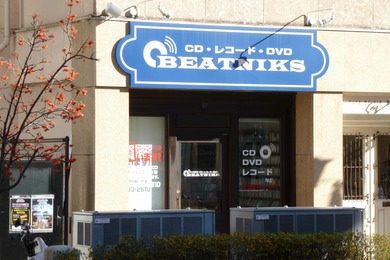Shiojiri, the last stop before our destination in Matsumoto, seemed to be a grape growing centre. Hughesy tends to notice things like barrels stacked on railway platforms. Its name apparently translates as Salt Butt, due to the fact that it marked the end of the road for salt merchants travelling inland from the Sea of Japan. It was the point where the mountain passes became too treacherous to cross in winter, and those on the other side of the range tended to draw their supplies of salt from the Pacific Ocean side.
Once we’d arrived in Matsumoto, the first priority was to lock down the final train legs, from Niigata to Tokyo and, most importantly, from Tokyo back to Osaka on Saturday. From there, we headed to the tourist information to grab a map, guide book and any other materials that might seem relevant, then off to a second intermediate stop to drop off the baggage.
Our accommodation for the night is out on the edge of the city, and I'm actually tapping this out looking over the lights of Matsumoto towards the Japanese Alps, which were a magnificent sight before the sun went down. Elsewhere you'd start looking for a coin locker, but here it was a case of heading to a hotel near the station hotel dropping the bags there. The next time we saw them was in the lobby of the night’s hotel. I still had the back pack, however, working on the basis that the other stuff could go missing, but there was no way I was letting the iPad out of my sight, and it was in the backpack. Some might quibble about the weight, but it was only a fifteen minute walk over to Matsumoto Castle, and, in any case, I needed the exercise.

The walk took us through what seemed to be the outskirts of downtown Matsumoto before a left hand turn onto the street that leads up to the castle, but unlike some other places the approach doesn't have the castle looming at the end. We crossed the river, having passed a CD shop called Beatniks, which seemed strangely appropriate given the Beat Generation affinity with Zen Buddhism, and it was about a block from there to the approaches to the castle.
As we headed across the final intersection with the castle over on the left, I was mildly bemused by the presence of a seemingly incongruous modern building. Quite a big one, in fact, and something that didn't quite fit into the vibe of an old castle precinct.
Subsequent investigation using a site map Madam had failed to notice revealed it was the Matsumoto Museum, with displays of artifacts documenting the city’s history and the ticket that got us into the castle was good there too.
Matsumoto (unsurprisingly, given where we were headed) is a castle town that had grown into a modern city with a population up around a quarter of a million, built up like other urban centres by gradually merging the old city with surrounding villages. Surrounded by mountains, the city is noted for apples, soba (buckwheat noodles) and sake. A nearby wasabi farm is reputedly the world’s largest and the area boasts a number of hot springs (onsen).